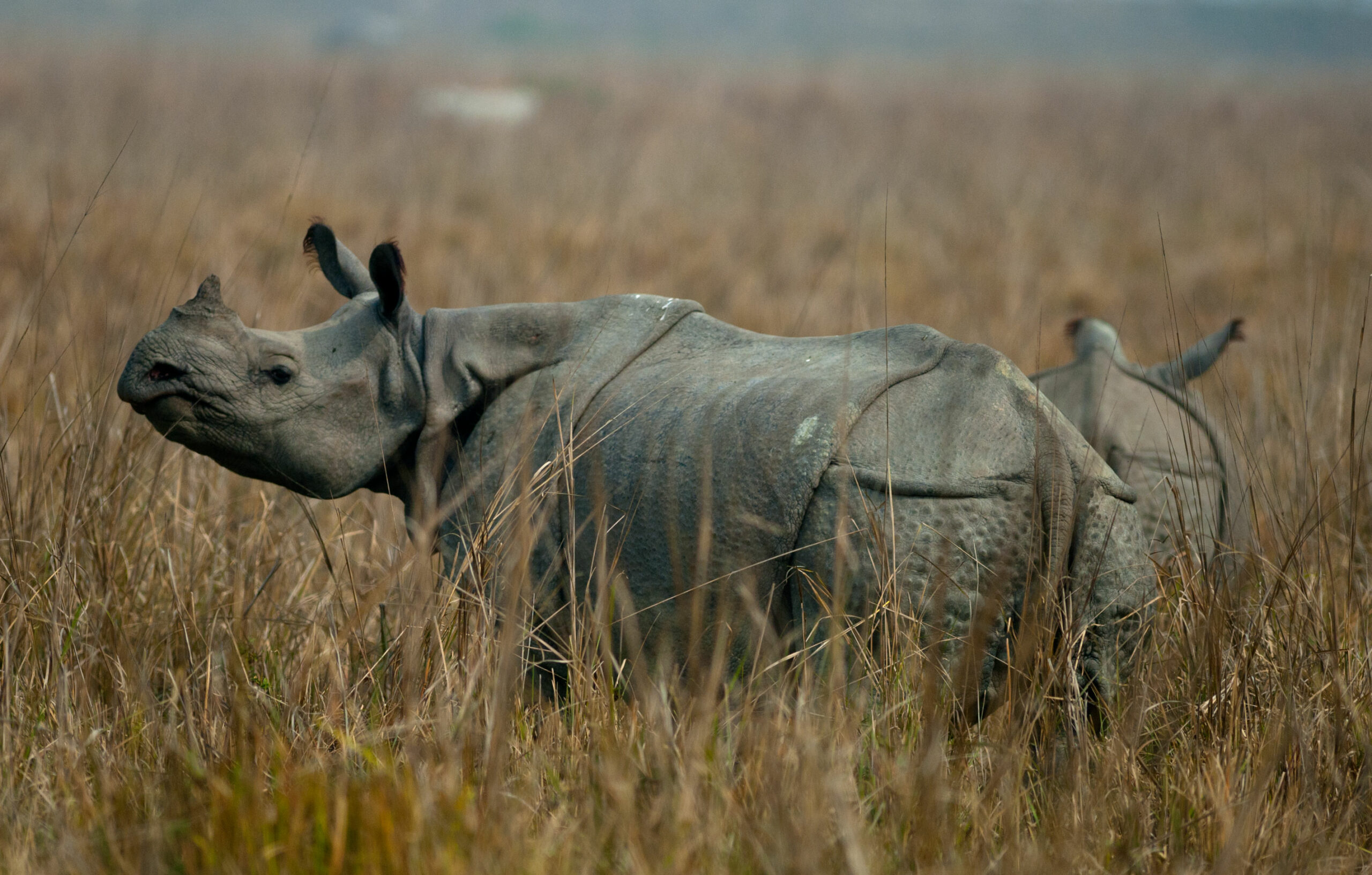The International Rhino Foundation Expands Support for Greater One-Horned Rhino with First Grants in Nepal
October 26, 2021Washington, DC – The International Rhino Foundation (IRF) announced today its first ever grants to support conservation efforts of the greater one-horned rhino population in Nepal. IRF will support ongoing habitat restoration projects in Chitwan National Park.
Chitwan holds the second largest population of greater one-horned rhinos in the world after Kaziranga National Park in Assam, India. The Park’s vast grasslands provide an excellent habitat for the rhinos, and nearly 700 can currently be found within the borders.
However, habitat for rhinos is gradually shrinking in Chitwan as a result of the growth of invasive species that choke out the grass that rhinos depend on for food. IRF is working with local NGO, National Trust for Nature Conservation (NTNC) and National Park officials to create invasive-free grazing areas for rhinos and other herbivores.
“Studies have shown that during the dry season, rhinos often eat the invasive species which can cause illness and even death,” explained Dr. Naresh Subedi, NTNC’s conservation programs manager. “By removing the species we can restore the natural habitat and ensure the long term survival of rhinos.” NTNC has observed that rhinos frequent the managed grasslands more frequently than unmanaged areas.
Interventions will take place twice a year over an area of approximately 250 hectares of the national park, with the hopes of eliminating the spread of the invasive species. Restored grassland areas will be monitored by NTNC utilizing cameras to guide future interventions as well as identify grazing patterns of the rhinos.
Habitat management and invasive species removal projects are also underway in India, and NTNC will collaborate with their colleagues there to share experience and learning that can benefit both countries’ efforts.
The greater one-horned rhino population, which once numbered as low as 100 individuals in the early 1900s, has increased to more than 3,700. Strict protection by government authorities and forestry officials in India and Nepal has resulted in several years of poaching declines. Nepal completed a new nationwide census earlier this year for greater one-horned rhinos and the population now stands at 752, an increase of 107 from the previous survey in 2015.
“Nepal is home to a key population of greater one-horned rhinos, and we are excited to begin work in the country with our new partner, NTNC,” said Nina Fascione, executive director of IRF. “Building on the successes of the national government and local organizations, we look forward to working together to ensure continued population growth in the country.”
IRF has also introduced the greater one-horned rhino into its popular adoption program. By symbolically adopting a rhino, donors will support tracking and monitoring programs, habitat management and translocations and will receive a certificate, adoption sticker and bio and photos. More information is at https://rhinos.org/adopt/adopt-a-greater-one-horned-rhino/.
###

